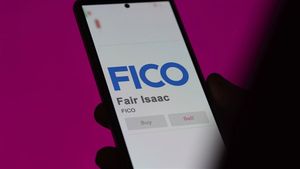– In AVONELLE-X, the largest long-term extension trial in wet AMD, disease control and durability were maintained over 4 years, with nearly 80% of patients on extended dosing by study end –
– Over 60% of people with a difficult-to-treat form of wet AMD showed no signs of damaging lesions in the SALWEEN study, and clinically meaningful vision improvements were observed –
– Vabysmo was well tolerated with a consistent long-term safety profile in wet AMD in both studies –
Genentech, a member of the Roche Group (SIX: RO, ROG; OTCQX: RHHBY), announced today new data from the AVONELLE-X and SALWEEN studies of Vabysmo® (faricimab-svoa), presented at the 25th Euretina Congress in Paris, France. Data from the open-label AVONELLE-X study reinforce the efficacy, safety and durability of Vabysmo over four years in wet age-related macular degeneration (AMD), a leading cause of vision loss. In the single-arm SALWEEN study, Vabysmo showed clinically meaningful vision gains and retinal drying over one year in polypoidal choroidal vasculopathy (PCV), a vision-threatening subtype of wet AMD that is especially common in Asia.
“The robust SALWEEN findings in PCV highlight Vabysmo’s potential to deliver clinically meaningful improvements and help mitigate vision loss,” said Levi Garraway, M.D., Ph.D., Genentech’s chief medical officer and head of Global Product Development. “Alongside the long-term AVONELLE-X results in wet AMD, these findings support our mission to develop and deliver impactful medicines for people with difficult-to-treat eye diseases."
In new one-year data from the single-arm, open-label Phase IIIb/IV SALWEEN study of Vabysmo for the treatment of people with PCV in Asia, patients experienced a clinically meaningful gain of 8.9 letters in best-corrected visual acuity (BCVA) from baseline averaged over weeks 40, 44 and 48. At year 1, more than 50% of patients were assigned to extended five-month dosing. Vabysmo also had a clinically meaningful impact on the abnormal, polyp-like blood vessels characteristic of PCV, with these lesions completely resolving in more than 60% of patients and inactivation of polypoidal lesions in the majority (86%) of eyes. Vabysmo was well tolerated, with a safety profile in PCV that was consistent with its known safety profile in wet AMD.
The AVONELLE-X study was a two-year open-label extension of the two-year Phase III TENAYA and LUCERNE studies of Vabysmo in wet AMD. Vision remained stable throughout the two years of AVONELLE-X, and anatomic improvement from the parent trials was sustained through AVONELLE-X. Results showed that after up to four years of treatment with Vabysmo, nearly 80% of patients had extended their treatment intervals to every three or four months, reinforcing the results seen in TENAYA and LUCERNE. Vabysmo was well tolerated, and safety data were consistent with its known safety profile in wet AMD.
To date, Vabysmo is approved in more than 100 countries for wet AMD and diabetic macular edema (DME), and in more than 60 countries for macular edema following retinal vein occlusion (RVO). More than eight million doses of Vabysmo have been distributed globally since its initial U.S. approval in 2022.
About Wet Age-Related Macular Degeneration (AMD)
Age-related macular degeneration (AMD) is a condition that affects the macula, the part of the eye that provides sharp, central vision needed for activities like reading. It is a leading cause of blindness for people aged 60 and over in the U.S. Wet, or neovascular, AMD is an advanced form of the disease that can cause rapid and severe vision loss. Approximately 20 million people in the U.S. have some form of AMD, and of those, about 1.5 million have late-stage AMD, which includes wet AMD.
Wet AMD is caused by growth of abnormal blood vessels, also referred to as choroidal neovascularization (CNV), into the macula. These vessels leak fluid and blood and cause scar tissue that destroys the central retina. This process results in a deterioration of sight over a period of months to years.
Genentech is committed to helping people access the medicines they are prescribed and offers comprehensive services for people prescribed Vabysmo to help minimize barriers to access and reimbursement. Patients can call 833-EYE-GENE for more information. For people who qualify, Genentech offers patient assistance programs through Genentech Access Solutions. More information is also available at (866) 4ACCESS/(866) 422-2377 or https://www.Genentech-Access.com.
Visit https://www.Vabysmo.com for additional information.
About polypoidal choroidal vasculopathy
Polypoidal choroidal vasculopathy (PCV) is a subtype of wet AMD that is more prevalent in people of Asian or African descent than European descent. It accounts for up to 60% of wet AMD cases in people of Asian descent, and up to 20% in people of European descent.
PCV is characterized by abnormal blood vessels in the choroid, a thin layer of tissue between the sclera (the whites of the eyes) and the retina. These abnormal vessels can leak fluid or blood, leading to retinal damage and vision loss. People with PCV often experience blurred vision or a blind spot in or near the center of their vision in one or both eyes. Early diagnosis and treatment are important to help restore vision and prevent further vision loss.
About AVONELLE-X
AVONELLE-X (NCT04777201) was an open-label, multicenter, two-year extension study of Vabysmo in 1,029 patients with wet AMD who completed one of the two Phase III studies, TENAYA (NCT03823287) or LUCERNE (NCT03823300).
Patients in TENAYA and LUCERNE were treated with either 6 mg Vabysmo or 2 mg aflibercept. During AVONELLE-X, all patients were treated with Vabysmo on a treat-and-extend regimen, where the time between Vabysmo treatments could be adjusted based on retinal fluid levels and visual acuity.
About SALWEEN
SALWEEN was a Phase IIIb/IV multicenter, open-label, single-arm study of Vabysmo for the treatment of Asian people with PCV. It enrolled 135 patients aged 50 years and over from 38 sites across nine markets in Asia, including China, Hong Kong SAR, India, Japan, Malaysia, Singapore, South Korea, Taiwan and Thailand. Patients received four loading doses of Vabysmo 6 mg over 12 weeks. After that, their treatment schedule was adjusted based on their progress, with doses given every 8, 12, or 16 weeks. From weeks 44 to 104, patients followed a personalized treatment plan with doses spaced out as far as every 20 weeks. The primary endpoint was the change from baseline in BCVA averaged over weeks 40-48.
About Vabysmo® (faricimab-svoa)
Vabysmo is the first bispecific antibody approved for the eye. It targets and inhibits two signaling pathways linked to a number of vision-threatening retinal conditions by neutralizing angiopoietin-2 (Ang-2) and vascular endothelial growth factor-A (VEGF-A). While research is underway to better understand the role of the Ang-2 pathway in retinal disease, Ang-2 and VEGF-A are thought to contribute to vision loss by destabilizing blood vessels, which may cause new leaky blood vessels to form and increase inflammation. By blocking pathways involving Ang-2 and VEGF-A, Vabysmo is designed to stabilize blood vessels.
Vabysmo U.S. Indications
Vabysmo (faricimab-svoa) is a prescription medicine given by injection into the eye, used to treat adults with neovascular (wet) age-related macular degeneration (AMD), diabetic macular edema (DME) and macular edema following retinal vein occlusion (RVO).
Important Safety Information
Contraindications
Vabysmo is contraindicated in patients who have an infection in or around their eye, have active swelling around their eye that may include pain and redness, or are allergic to Vabysmo or any of the ingredients in Vabysmo.
Warnings and Precautions
- Injections like the one for Vabysmo can cause an eye infection (endophthalmitis) or separation of layers of the retina (retinal detachment). Patients should seek medical care if they experience increasing eye pain, vision loss, sensitivity to light, or redness in the white of the eye.
- Vabysmo may cause a temporary increase in pressure in the eye (intraocular pressure), which occurs 60 minutes after the injection.
- Although not common, Vabysmo patients have had serious, sometimes fatal, problems related to blood clots, such as heart attacks or strokes (thromboembolic events). In clinical studies for wet AMD during the first year, 7 out of 664 patients treated with Vabysmo reported such an event. In DME studies from baseline to week 100, 64 out of 1,262 patients treated with Vabysmo reported such an event. In clinical studies for RVO during 6 months, 7 out of 641 patients treated with Vabysmo reported such an event.
- Retinal vasculitis and/or retinal vascular occlusion, typically in the presence of intraocular inflammation, have been reported with the use of Vabysmo. Healthcare providers should discontinue treatment with Vabysmo in patients who develop these events. Patients should be instructed to report any change in vision without delay.
Adverse Reactions
The most common adverse reactions (≥5%) reported in patients receiving Vabysmo were cataract (15%) and blood on the white of the eye (conjunctival hemorrhage, 8%). These are not all the possible side effects of Vabysmo.
Pregnancy, Lactation, Females and Males of Reproductive Potential
- Based on how Vabysmo interacts with your body, there may be a potential risk to an unborn baby. Patients should use birth control before their first injection, during their treatment with Vabysmo, and for 3 months after their last dose of Vabysmo.
- It is not known if Vabysmo passes into breast milk. Patients should talk to their healthcare provider about the best way to feed their baby if they receive Vabysmo.
Patients may report side effects to the FDA at (800) FDA-1088 or http://www.fda.gov/medwatch. Patients may also report side effects to Genentech at (888) 835-2555.
Please see additional Important Safety Information in the full Vabysmo Prescribing Information or visit https://www.Vabysmo.com.
About Genentech in Ophthalmology
Genentech is researching and developing new treatments for people living with a range of eye diseases that cause significant visual impairment and blindness, including wet age-related macular degeneration (AMD), diabetic macular edema (DME), diabetic retinopathy (DR), geographic atrophy (GA) and other retinal diseases, including rare and inherited conditions.
About Genentech
Founded nearly 50 years ago, Genentech is a leading biotechnology company that discovers, develops, manufactures and commercializes medicines to treat patients with serious and life-threatening medical conditions. The company, a member of the Roche Group, has headquarters in South San Francisco, California. For additional information about the company, please visit http://www.gene.com.
View source version on businesswire.com: https://www.businesswire.com/news/home/20250904712384/en/
Contacts
Media Contact: Nicole Burkart, (650) 467-6800
Advocacy Contact: Meg Harrison, (617) 694-7060
Investor Contacts: Loren Kalm, (650) 225-3217
Bruno Eschli, +41 61 687 5284








